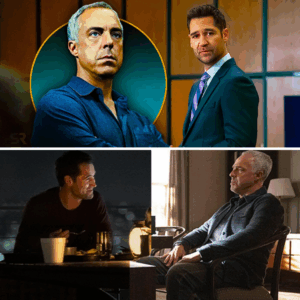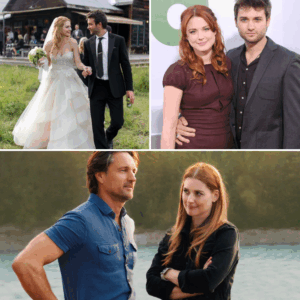Netflix’s latest literary adaptation is quietly dropping jaws — and it might just be the most haunting epic of the year. Set against the breathtaking but unforgiving backdrop of the Pacific Northwest, this emotional drama follows a young orphan named Robert as he comes of age building America’s railroad frontier. But this isn’t just a period piece — it’s a soul-shattering tone poem about love, loss, and the quiet weight of time.
In an era where streaming platforms churn out content at a dizzying pace, few films manage to linger in the collective consciousness like Train Dreams. Directed by Clint Bentley and based on Denis Johnson’s Pulitzer Prize-finalist novella, this Netflix original has already sparked a frenzy among early viewers and critics alike. Premiering at the 2025 Sundance Film Festival to rave reviews and boasting a staggering 97% on Rotten Tomatoes from initial critiques, the film is poised to redefine the period drama genre. With its lush visuals evoking the romantic highlands of Outlander and the raw, visceral survivalism of The Revenant, Train Dreams weaves a tapestry of human resilience that feels both intimately personal and grandly epic. As one critic aptly put it, it’s “a landmark homage to the unsung workers who built America,” celebrating the Puritan work ethic amid nature’s majesty and cruelty.
But what makes Train Dreams stand out in a crowded field of historical adaptations? This article delves deep into the film’s narrative, thematic depth, visual artistry, performances, and cultural impact, exploring why viewers are declaring it a masterpiece they’ll “never recover from.” From its faithful yet innovative adaptation of Johnson’s prose to its unflinching portrayal of loss, we’ll unpack the elements that have audiences obsessed, even before its wide release on Netflix on November 21, 2025.
A Plot That Echoes the Rhythms of Life Itself
At its core, Train Dreams follows Robert Grainier (played by Joel Edgerton), an orphan thrust into the harsh realities of early 20th-century America. Raised in the shadow of the Industrial Revolution’s westward expansion, Robert finds purpose in the grueling labor of logging and railroad construction in the Pacific Northwest. The film spans decades, chronicling his journey from a wide-eyed youth to a weathered elder, as he navigates the transformative forces reshaping the nation.
Without venturing into spoiler territory, the story begins with Robert’s arrival in the untamed wilderness, where towering forests and raging rivers symbolize both opportunity and peril. He marries Gladys (Felicity Jones), a woman whose quiet strength becomes the anchor of his existence. Their courtship and domestic life provide moments of tender beauty, contrasting sharply with the brutality of Robert’s work—felling ancient trees, blasting through mountains, and laying tracks that connect a fragmented country. Yet, as the narrative unfolds, unexpected tragedies force Robert to confront the fragility of human connections and the inexorable march of time.
Director Clint Bentley, co-writing the screenplay with Greg Kwedar (the duo behind the acclaimed Sing Sing), masterfully adapts Johnson’s novella, which was first published in The Paris Review in 2002 and later as a standalone book in 2011. The film’s structure mirrors the book’s elliptical style, jumping through time with poetic fluidity rather than linear chronology. This non-traditional approach allows viewers to experience Robert’s life as a series of vignettes—dreamlike sequences that blend memory, reality, and hallucination. It’s a narrative choice that elevates the story beyond a simple biopic, turning it into a meditation on existence itself.
Critics have praised this plotting for its subtlety. As noted in a Sundance review, the film “captures a small life on on a big scale,” clocking in at a tidy 95 minutes yet feeling expansive in scope. Unlike the sweeping romances of Outlander, where time travel and clan wars drive the action, Train Dreams finds drama in the mundane: a shared meal by a campfire, the echo of a train whistle in the night, or the silent grief of isolation. And compared to The Revenant‘s relentless survival ordeal, Train Dreams intersperses brutality with moments of quiet transcendence, making the hardships feel earned and profound.
Themes of Love, Loss, and Survival: A Soul-Shattering Tone Poem
What truly sets Train Dreams apart is its profound exploration of universal themes, rendered with a poetic intensity that lingers long after the credits roll. Love, in Bentley’s vision, is not grandiose but fragile and fleeting—a beacon amid the darkness of industrial progress. Robert and Gladys’s relationship is portrayed with understated authenticity, their affection conveyed through stolen glances and simple gestures rather than overt declarations. Felicity Jones brings a luminous vulnerability to Gladys, making her the emotional heart of the film. Their bond represents the human need for connection in a world being reshaped by machines and manifest destiny.
Loss, however, is the film’s beating pulse. Johnson’s novella is renowned for its elegiac tone, mourning not just personal tragedies but the vanishing American frontier. The adaptation amplifies this, showing how Robert’s grief manifests in hallucinations and a deepening solitude. One particularly haunting sequence—hinted at in the teaser—involves a devastating fire that symbolizes the destructive force of nature and progress alike. Viewers have described these moments as “soul-shattering,” with early reactions on social media echoing sentiments like “I was in tears for the last 30 minutes—it’s beautiful but brutal.”
Survival, too, is reimagined here not as heroic conquest but as quiet endurance. Robert’s life parallels the railroads he builds: straight lines cutting through chaos, yet vulnerable to derailment. The Pacific Northwest setting serves as a character in its own right, with its misty forests and jagged peaks evoking a sense of awe and terror. Themes of environmental degradation are woven subtly—loggers decimating ancient woods mirror Robert’s internal erosion—highlighting man’s fraught relationship with nature. As one review observes, the film is “a ravishing contemplation of man and nature,” where beauty and brutality coexist in every frame.
These themes converge in a narrative that feels timeless, resonating with contemporary audiences grappling with change. In a post-pandemic world, Robert’s isolation and search for meaning strike a chord, making Train Dreams more than historical fiction—it’s a mirror to our own era of uncertainty.
Visual Mastery: More Beautiful Than Outlander, More Brutal Than The Revenant
Cinematographically, Train Dreams is a feast for the eyes, surpassing the scenic splendor of Outlander while matching the gritty realism of The Revenant. Shot on location in the Pacific Northwest, the film’s visuals capture the region’s dual nature: ethereal beauty in golden-hour forests and fog-shrouded valleys, contrasted with the harshness of mud-choked work sites and blizzard-swept mountains.
Cinematographer employs wide-angle lenses to emphasize the vastness of the landscape, making Robert appear diminutive against nature’s grandeur—a visual metaphor for human insignificance. The color palette shifts from warm earth tones in domestic scenes to cold blues and grays during moments of strife, enhancing the emotional arc.
Comparisons to Outlander are inevitable: both feature stunning natural backdrops that underscore romantic narratives. Yet Train Dreams avoids romanticization, infusing its beauty with melancholy. Similarly, it echoes The Revenant‘s brutality—think bone-chilling cold and visceral labor sequences—but tempers it with poetic interludes, like dreamlike visions of trains thundering through the wilderness. Critics have hailed it as “spectacular” in look and sound, with an “epic spirit” despite its intimate scale.
The sound design, narrated by Will Patton in a gravelly voice that evokes Johnson’s prose, adds layers of immersion. Train whistles blend with wolf howls, creating an auditory landscape that’s as haunting as the visuals.
Stellar Performances That Anchor the Epic
Joel Edgerton’s portrayal of Robert Grainier is nothing short of transformative, mining “depth, beauty, and sadness from an ordinary life.” Edgerton, known for roles in The Great Gatsby and Loving, embodies Robert’s stoic resilience with subtle physicality—his weathered face and deliberate movements convey a lifetime of hardship. It’s a performance that’s already generating Oscar buzz, with Edgerton also serving as an executive producer.
Felicity Jones shines as Gladys, bringing warmth and complexity to a role that could have been archetypal. Her chemistry with Edgerton grounds the film’s emotional core, making their love feel palpable and poignant. Supporting turns from Kerry Condon, William H. Macy, and Nathaniel Arcand add texture, portraying the eclectic figures who populate Robert’s world—from fellow laborers to indigenous locals witnessing their land’s transformation.
Will Patton’s narration provides a literary bridge, his voiceover excerpts from the novella infusing the film with poetic gravitas.
Viewer and Critic Obsession: Early Reactions and Cultural Impact
Even before its Netflix debut, Train Dreams has ignited passion among viewers. The official teaser, released on July 24, 2025, garnered millions of views, with fans on platforms like Reddit proclaiming, “This looks really good… a visual treat.” Early screenings at Sundance elicited standing ovations, and social media is abuzz with comments like “I’m obsessed—it’s more beautiful than anything I’ve seen” and “The brutality hit me hard; I’ll never recover from that ending.”
Critics echo this enthusiasm. Variety calls it a “meditative mosaic,” while Vulture deems it “a staggering work of art.” The 97% Rotten Tomatoes score underscores its acclaim, with consensus praising its quiet power.
Culturally, the film arrives at a pivotal moment, reminding us of the laborers who built modern America amid today’s discussions on industry and environment. Its adaptation fidelity honors Johnson’s legacy, introducing his work to new audiences.
Conclusion: A Masterpiece That Demands to Be Experienced
Train Dreams is more than a film—it’s an experience that blends the lyrical beauty of Outlander with the unforgiving edge of The Revenant, resulting in a breathtaking masterpiece of love, loss, and survival. Clint Bentley’s direction, coupled with powerhouse performances and stunning visuals, crafts a story that’s intimate yet universal, haunting yet hopeful.
As viewers flock to theaters on November 7 and Netflix on November 21, expect the obsession to grow. This is cinema that stays with you, a tone poem on the human condition that proves ordinary lives can yield extraordinary art. If early reactions are any indication, Train Dreams isn’t just watchable—it’s unforgettable, a film you’ll “never recover from” in the best possible way.





